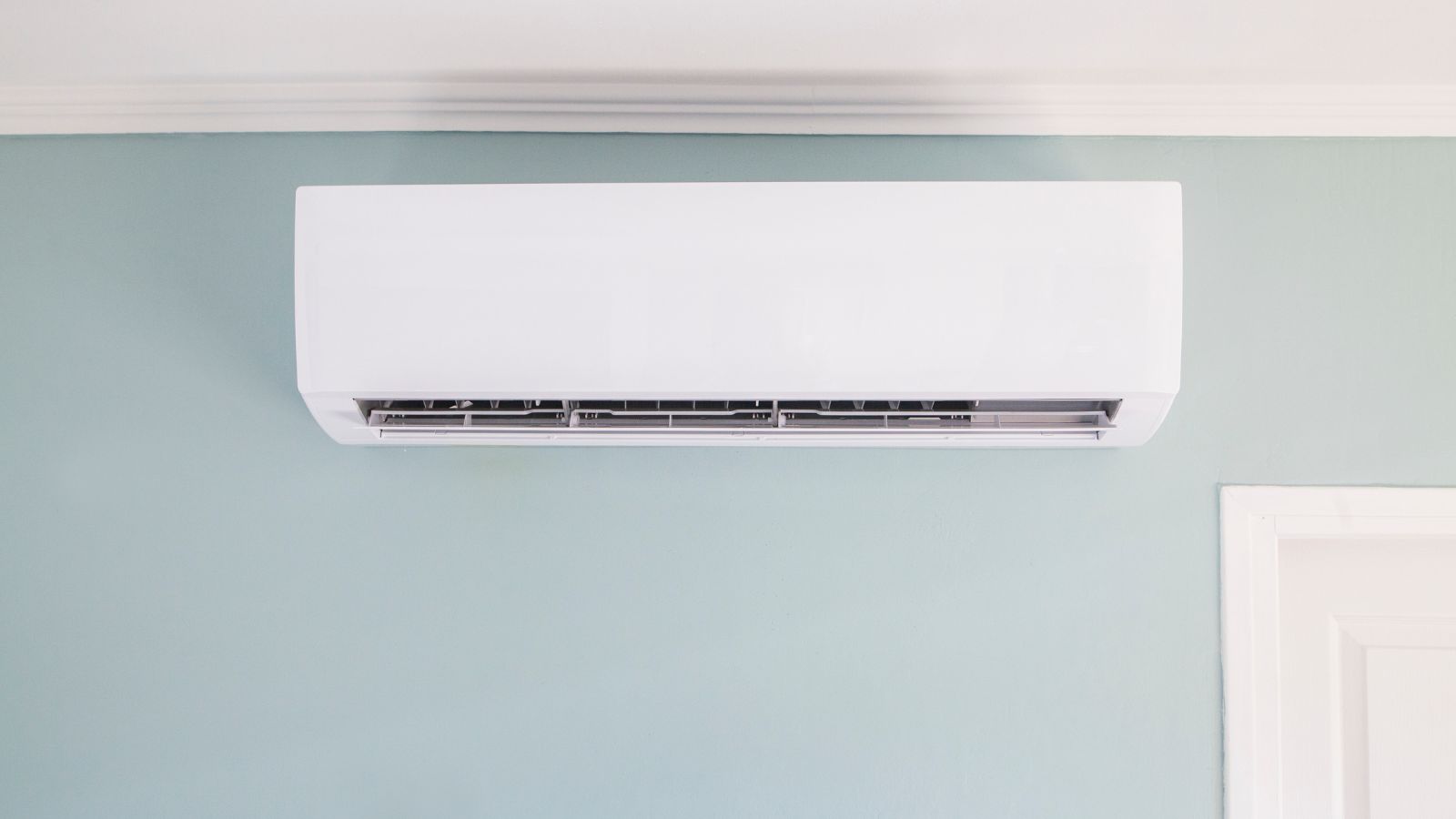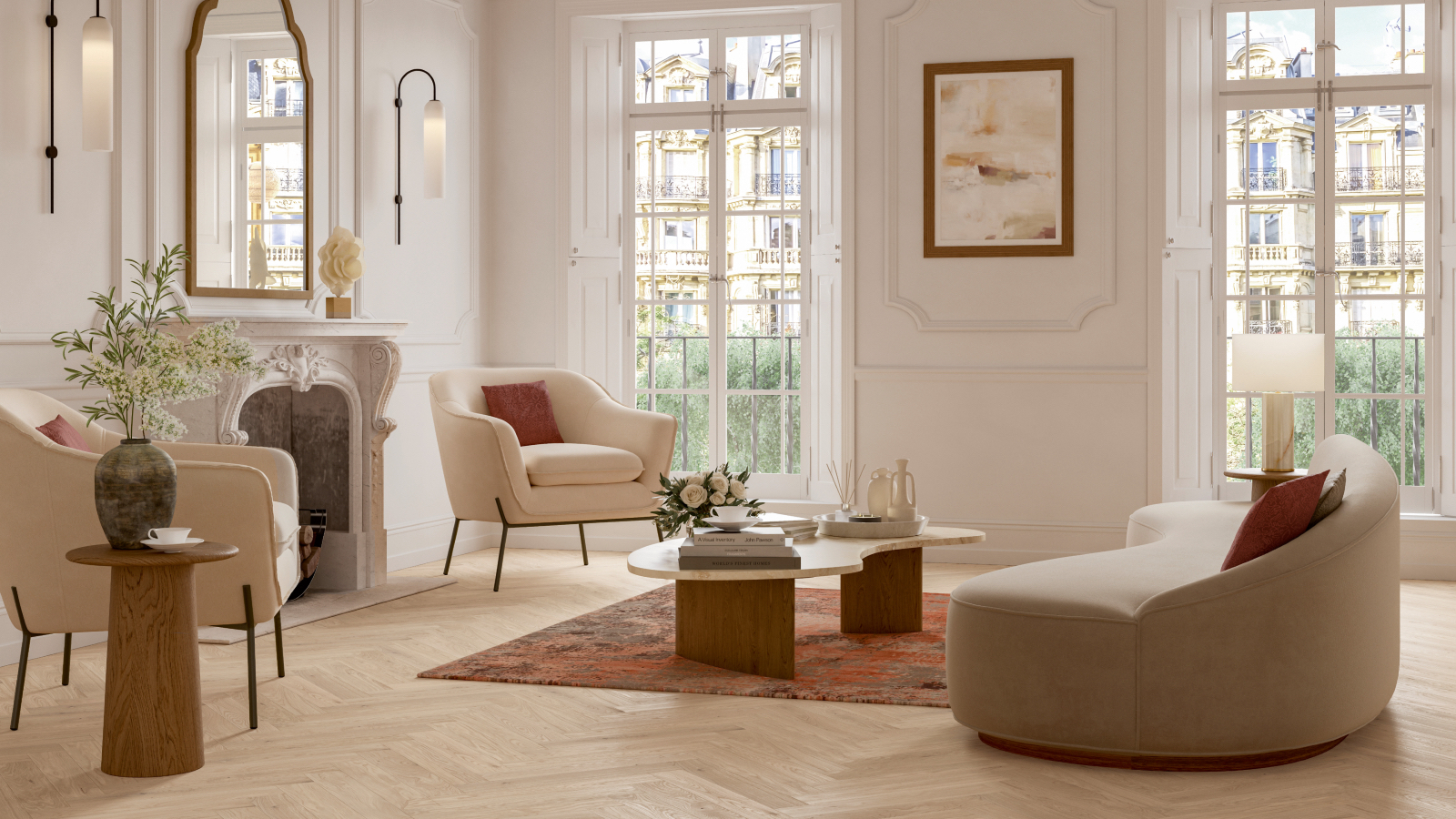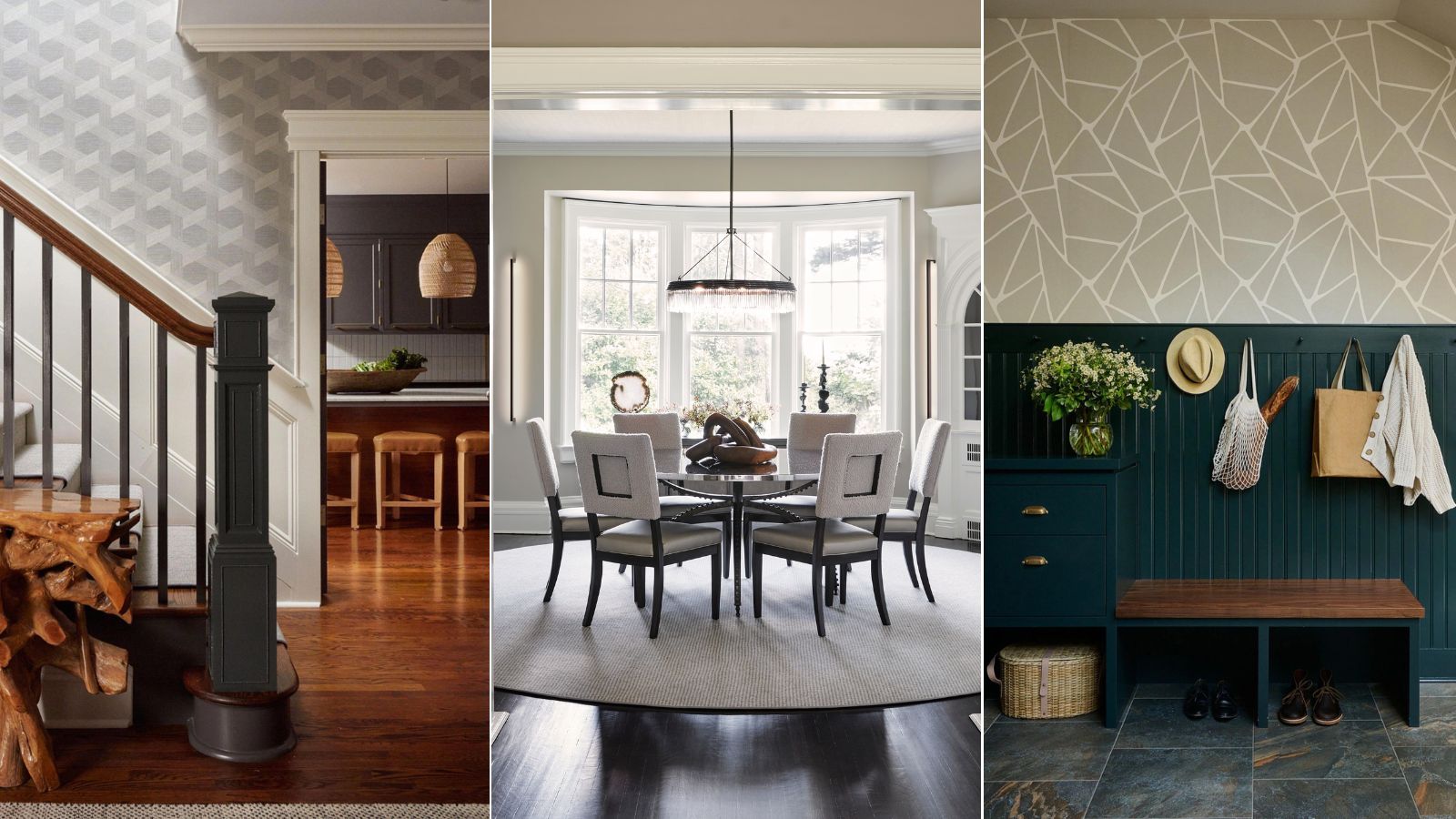Portable air conditioners vs central AC units: the difference, pros, cons and which is best for you
Our HVAC pro compares portable and central AC to help you decide the better fit for your home


If the heat is getting to you, I feel your pain. My fans are in full flow around the house but it's not quite enough, with the heat waking me up at night, so I'm comparing portable air conditioners vs central AC units to see if one might be a good solution.
I talked to our HVAC pro who has 10 years AC engineering and maintenance experience, to find out the differences, pros and cons of each, and if there is a particular type of buyer or household one is better suited for.
When even your best fan isn't bringing comfort and relief, it's a good time to consider more smart tech solutions to cool down your home. I've had portable ACs before and they are a brilliant solution.
Portable air conditioners vs AC units
What is a portable air conditioner and how is it different to a central one?
A portable air conditioner is a freestanding air conditioning appliance that cools down a room by removing the hot air and piping it outside with a large tube (usually placed out of a window). This is different to a central AC unit which has interior and external wall-mounted units.
Josh Mitchell, HVAC technician at Air Conditioner Lab explains, 'A portable AC is a self-contained unit ideal for cooling single rooms. It’s typically mounted on wheels and can be moved from one room to another, requiring only access to a window or venting solutions using a kit or tube for exhaust. These are crucial to how they operate and are offered in single or dual hose format with dual hose always the better option.'
Both portable units (such as Amazon's bestselling Black and Decker 12,000 BTU unit) and central units remove hot air and reduce humidity, which helps us cool down faster.
Mitchell says, "Central AC units use a system of ducts to distribute cooled air across multiple rooms or an entire building. It involves an outdoor unit and an indoor unit, typically installed permanently in a single location.'
I grew up in the UK and the homes here do not typically have AC units built in as standard and during heatwaves, my south-facing family home was nauseatingly hot. We bought a portable AC unit that was a complete work horse and lasted a decade, cooling down a medium open plan living room-diner in around 15 minutes, whilst removing excess moisture from the air.
It was so good, we bought one for upstairs, too, and started it off in one bedroom every evening, then when that had cooled sufficiently (around 30 minutes), moved it across to the the other bedroom. Once the heat of the day was out of the rooms, they didn't heat up again too much overnight, making our fans work better and keeping us all sleeping comfortable in the hot weather.
Pros
| Header Cell - Column 0 | Portable | Fixed |
|---|---|---|
| Pros | Much cheaper | Smaller |
| Row 1 - Cell 0 | Portable | Quieter |
| Row 2 - Cell 0 | Dehumidifies | Dehumidifies |
| Row 3 - Cell 0 | Good for renters | Quicker to cool |
| Cons | More of an eyesore | Higher upfront costs |
| Row 5 - Cell 0 | Takes up floor space | Need units in each room |
| Row 6 - Cell 0 | Louder | Requires regular care |
| Row 7 - Cell 0 | Can be unreliable | Installation more complex |
In my experience, the pros of a portable unit were plentiful, with great cooling top of the list. They work quickly in small to medium rooms, and come loaded with multiple options, timers, settings and functions, depending on the model you buy, and you can pick one that suits your aesthetic taste too.
HVAC technician Mitchell adds, 'Portable AC units are easy to move where needed and can be packed away in the wintertime. They don't need any professional installation and are much cheaper than installing a central system.'
I also loved how we could roll it around to the room that it was most needed in, without having to buy multiple units for the same level of the house. I grew up in an Iranian household and we had lots of big dinner parties, and cooking complex Persian meals in a boiling kitchen in the height of summer was awful, but after we got our portable AC unit, it was easy to keep our kitchen cool. Our guests enjoyed it too, congregating in the room the unit was in to chat.
Central AC systems have plentiful pros too. Mitchell says, 'These are more effective at cooling large spaces evenly, can increase home resale value and do not take up space in the living area.'
Cons
There were a few cons, however, including the fact it was quite noisy, and the large venting pipe was unsightly. We wedged it in the sliding door and drew the curtain on that side to hide it and lived with the eyesore to benefit from the cooling air, which was more than worth it. But it did mean if we were going into the backyard, we had to move the pipe, go out, replace it and shut the door. It didn't take more than 20 seconds but it was a bit of a nuisance underfoot.
Mitchell adds, 'Portable units are louder than central units, less efficient for large spaces, require window access and depending on the brand you buy, can be unreliable.'
Our portable AC unit was also rather large, needing space to operate and somewhere to store it in winter. We didn't put it in our garden shed to avoid mildew or mold growing in when not in use, and it needed manual emptying regularly of the water it collected from humidity in the air.
We kept ours in the corner of the dining room when not in use and accepted the floor space was gone. Upstairs, was the same story in terms of space and we had nowhere to store it so it floated around.
The cons of a central AC are detailed by Mitchell. 'These have higher upfront installation costs, need regular duct cleaning and maintenance, and installation will be complex, requiring professional help,' he says.
When to go for a portable AC unit
If you're renting, or don't want to spend the larger outlay of a fixed unit because this isn't a home you're planning to be in for long, a portable unit is a great stop-gap for smart cooling tech.
It may also be useful to learn more about whether or not an AC unit will devalue your home. when deciding.
Mitchell says they're best, 'for renters, those in smaller spaces, or homeowners who need a temporary or flexible cooling solution when Central AC is not physically available or out of budget.'
You can shop portable AC units from our retailer quick list:
- Shop portable AC units at Amazon
- Shop portable AC units at Walmart
- Shop portable AC units at Target
- Shop portable AC units at QVC
- Shop portable AC units at Best Buy
When to pick central AC
If you're a homeowner, and happy to splurge on that initial outlay - and invasive drilling and wall mounting - a fixed AC unit is a great addition to any house.
Mitchell adds, 'Central AC units are better suited for homeowners who need a long-term, robust solution for cooling large spaces like an entire family home. They do have a high cost upfront so homeowners will need to fork out a large lump sum initially.'
What to look for when choosing a portable AC unit
Mitchell advises checking energy efficiency and capacity before shopping. He explains, 'Look for units with a high SEER (Seasonal Energy Efficiency Ratio) rating to ensure energy cost savings, make sure the BTU (British Thermal Units) capacity matches the size of the space you need to cool.
To figure out the capacity matches your needs, measure the length and width of the room you intend to use it in, times the two numbers together (this gives you the square footage) and factor in ceiling height if unusually high.
Typical homes have ceilings at around eight feet, but older homes can have much more vertical space to cool. Mitchell recommends adding 1000 BTU to your calculations for each foot of ceiling height above eight.
If the space is an odd shape, calculate accurately by splitting the measurements into rectangular sections and adding overall square footage together.
FAQs
Is a portable AC unit cheaper?
A portable AC unit is cheaper to buy (typically ranging between $100-1000) and doesn't need installation. Central AC units and installation can cost anywhere from $1500 to $8000, depending on the type, with the average cost in USA being more than $5000. Central systems will need regular cleaning and maintenance, too which will cost you hundreds over the course of a year.
But running costs of a portable unit vary dependent on power and size. To work it out, find the wattage in the manual, convert to kilowatts (simply divide by 1000) and times by the hours you will run the portable AC unit daily. Then multiply that by the cost per kilowatt hours charged by your energy provider. You can find that rate on your latest bill.
If the running doesn't stack up for you, there are cost-efficient alternatives to AC including ceiling fans and cooling bedding.
Whilst you're ruminating on which is the better purchase for your household, learn the fastest ways to cool down a house.
Sign up to the Homes & Gardens newsletter
Design expertise in your inbox – from inspiring decorating ideas and beautiful celebrity homes to practical gardening advice and shopping round-ups.

Punteha was editor of Real Homes before joining Homes and Gardens as Head of Solved. Previously, she wrote and edited lifestyle and consumer pieces for the national press for 16 years, working across print and digital newspapers and magazines. She’s a Sunday Times bestselling ghostwriter, BBC Good Food columnist and founding editor of independent magazine, lacunavoices.com. Punteha loves keeping her home clean, has tested and reviewed the latest robot vacuums, enjoys cooking, DIY, and spending weekends personalizing her newly-built home, tackling everything from plumbing to tiling and weatherproofing.
-
 This simple marble hack elevates my budget-friendly wooden kitchen countertops and prevents the dreaded water damage for way less than you’d think
This simple marble hack elevates my budget-friendly wooden kitchen countertops and prevents the dreaded water damage for way less than you’d thinkThis design trick looks expensive, solves a problem, and was the easiest decision I made during my kitchen reno
By Charlotte Olby Published
-
 Emily Blunt gifted Cillian Murphy this $545 pillow – she's 'obsessed' with these luxury pillows, and frankly, so are we
Emily Blunt gifted Cillian Murphy this $545 pillow – she's 'obsessed' with these luxury pillows, and frankly, so are weThe Oppenheimer stars sleep on this ultra-luxe goose down pillow – here's why we love it – plus our affordable alternatives from $35
By Sophie Edwards Published
-
 9 ways to cool down a hot apartment in winter – and they don't cost the earth
9 ways to cool down a hot apartment in winter – and they don't cost the earthHVAC experts share their top tips for climate control when you don't control your thermostat
By Ottilie Blackhall Published
-
 Experts explain what to do if your house is cooling unevenly – and why it happens in the first place
Experts explain what to do if your house is cooling unevenly – and why it happens in the first placeHVAC pros delve into why your house is hot in one room and cold in another, and what you can do about it
By Anna K. Cottrell Published